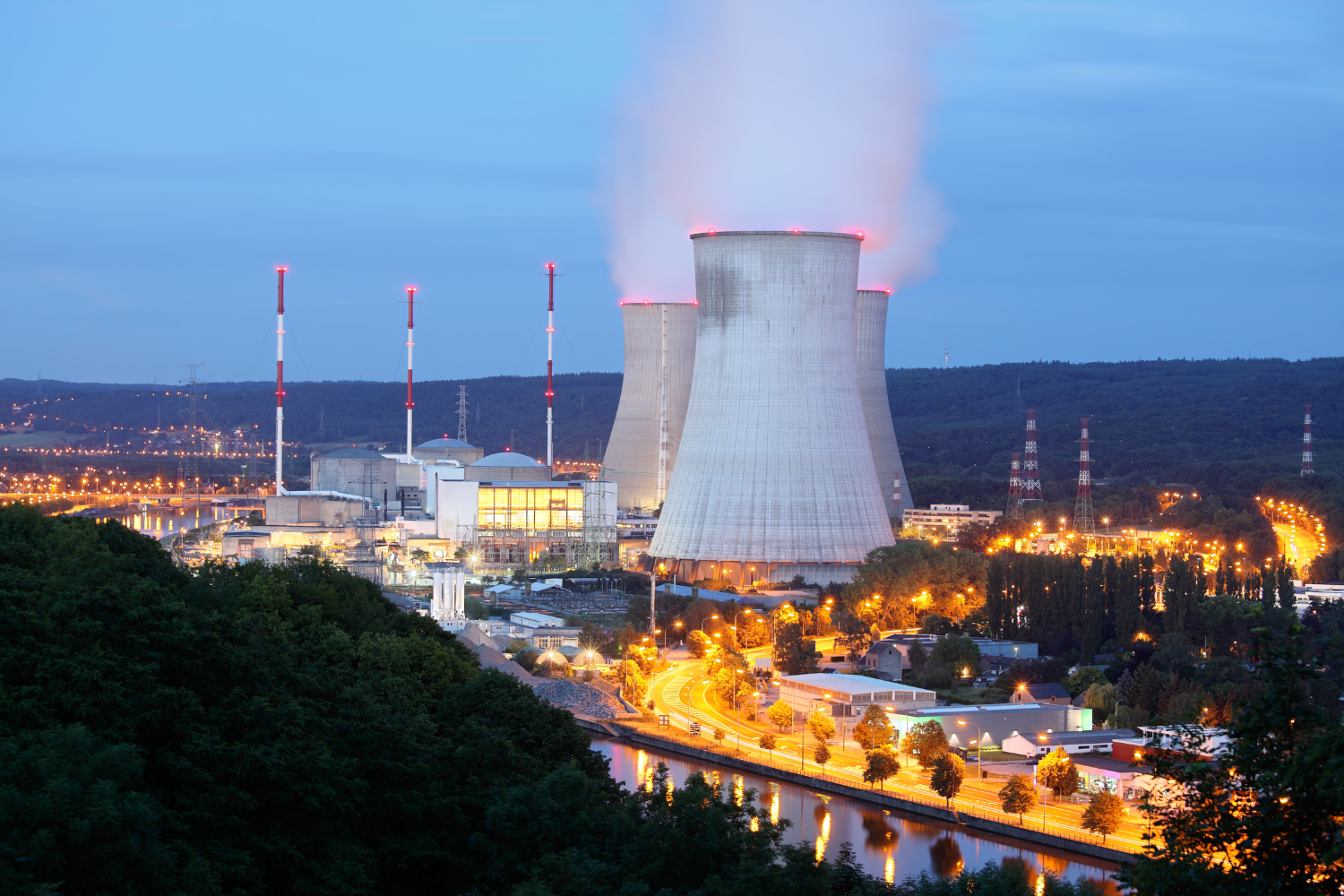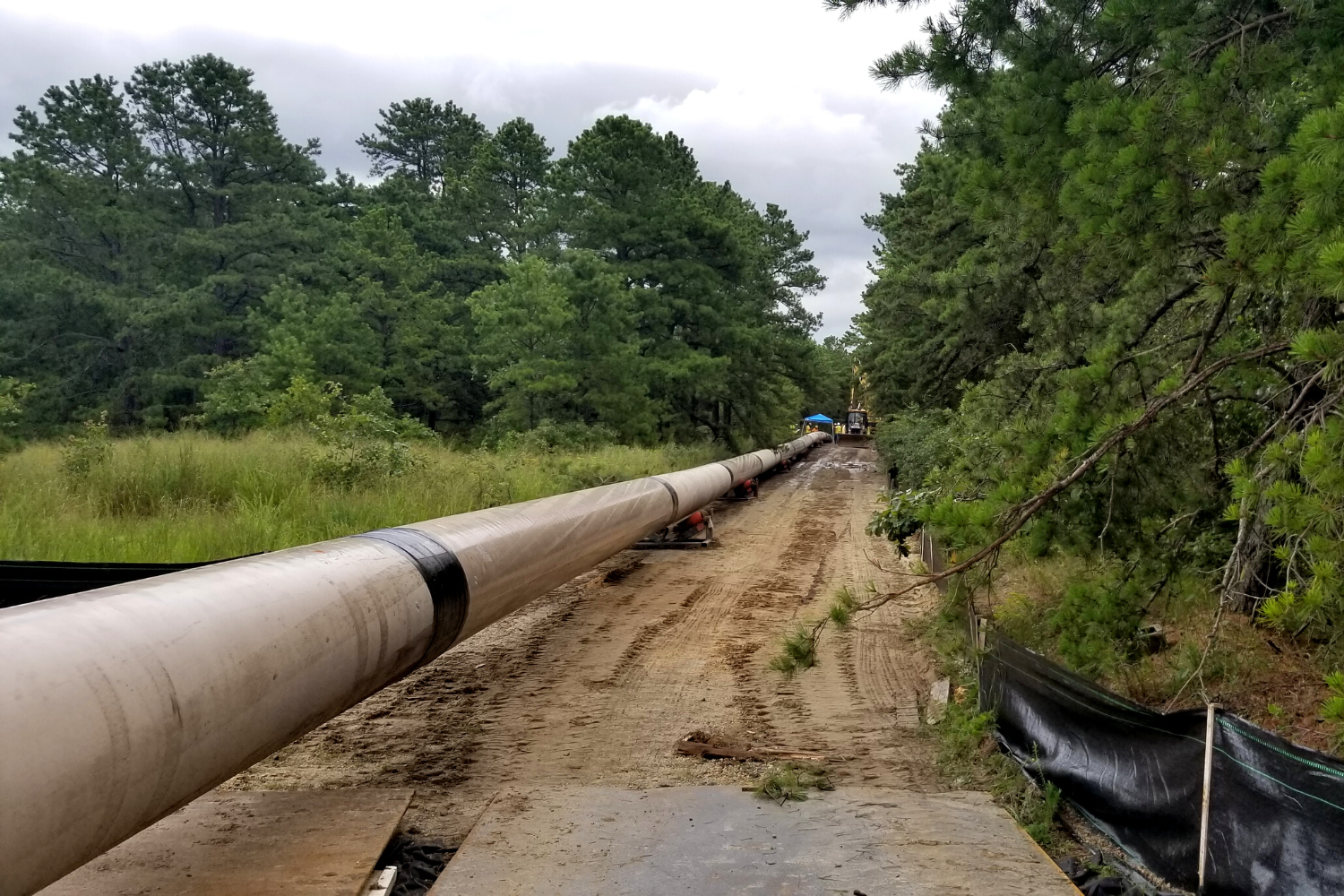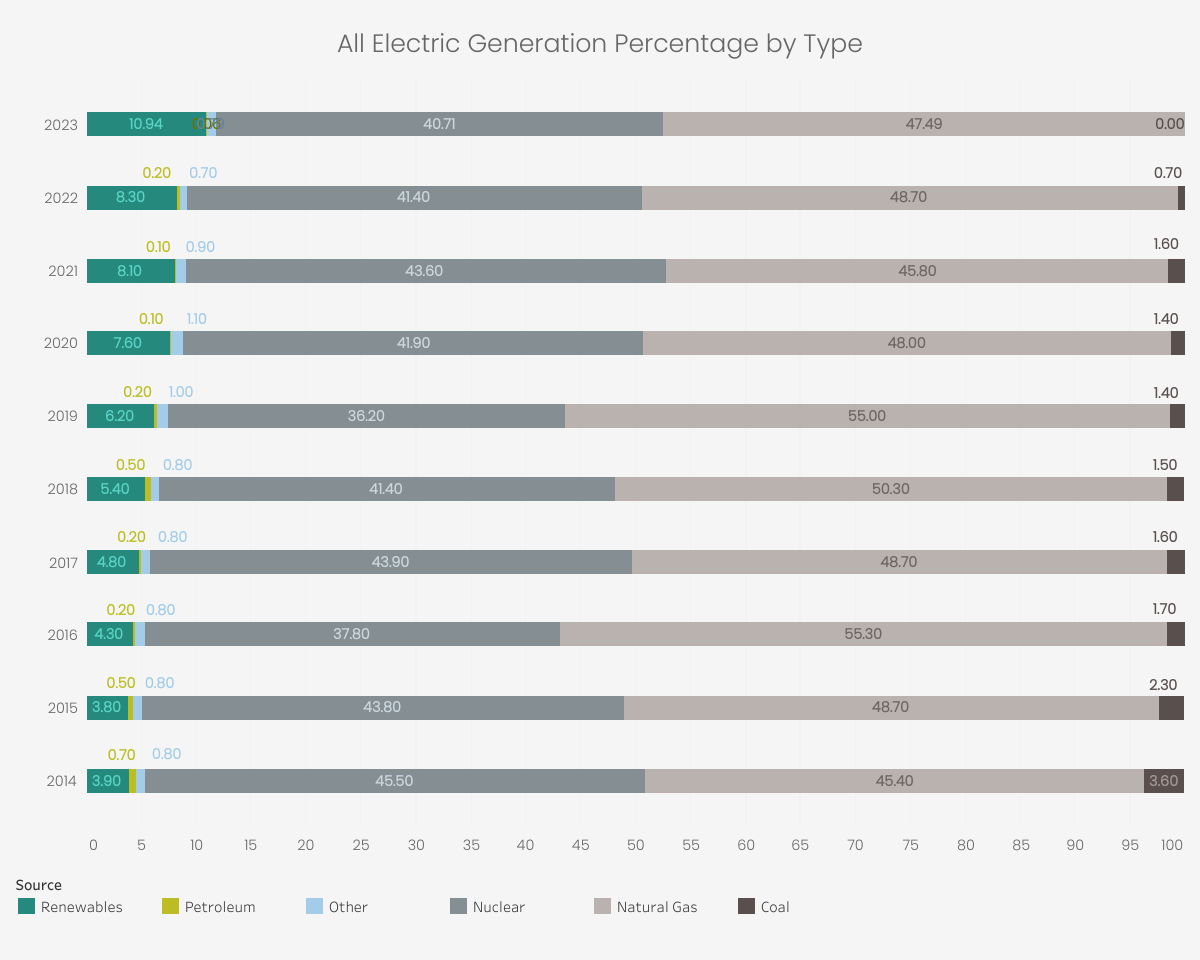
ELECTRIC GENERATION IN NEW JERSEY
THE GROWTH OF NUCLEAR POWER
Calls for clean electricity began long before climate change was widely recognized. Galvanizing events like the deadly 1953 Thanksgiving Day Smog in New York City led to public outrage and calls for cleaner air, and action followed at both the state and federal levels. In hindsight, these efforts were the starting points for the clean energy transition currently underway. In New Jersey, it was in December 1964 that ground was broken on the state’s first nuclear power plant, the Oyster Creek Nuclear Generating Station in Ocean County. Unlike the coal and oil-fired power plants of that era, nuclear energy promised an alternative that did not produce air pollution (or greenhouse gases). Following Oyster Creek’s completion in 1969, three more nuclear generating stations were constructed: Salem 1, completed in 1977, Salem 2 in 1981, and Hope Creek in 1986. Together they provided nearly half of the state’s electricity without contributing to air pollution or climate change. Even with the closing of Oyster Creek in 2018, nuclear power still provides more than a third of the state’s electricity, playing a foundational role in its transition to 100% clean energy.


THE SHIFT TO NATURAL GAS
The second phase in New Jersey’s clean energy transformation began in 2008 with development of the Marcellus Shale formation in Pennsylvania and neighboring states to the west. Plentiful and affordable natural gas, used in modern, high-efficiency combined-cycle power plants, allowed natural gas to replace older coal-fired power plants on a large scale. By the spring of 2022, the last coal-powered plants ceased operations in the state. However, while natural gas produces substantially less pollution and fewer greenhouse gases than coal, it is still a fossil fuel and contributes significantly to the state’s climate impact.
THE BUILD OUT OF RENEWABLES
Today, New Jersey has embarked on the third phase of its clean energy transformation, one that will ultimately eliminate net climate emissions entirely from the state’s electricity generation. The state has set a series of clean energy goals, including, a 50% Renewable Portfolio Standard by 2030, 100% carbon-neutral electric generation by 2050 and most recently via Executive Order 315, the goal of achieving 100% clean electricity sold in the state by 2035. The defining feature of the state’s strategy is to deploy large amounts of renewable energy, specifically solar photovoltaic panels (solar PV) and offshore wind turbines. Further, as modeled in 2019 Energy Master Plan, clean combined-cycle turbines that run on renewable biofuels or hydrogen will be needed to supplement solar PV and offshore wind to assure reliable supplies regardless of conditions (see 2050 projection). Clean, renewable power will also be brought to New Jersey from distant wind farms, solar facilities, and other carbon-free sources using transmission networks.
New Jersey solar PV now produces nearly as much power in a year as the Oyster Creek nuclear plant did. In 2020, solar energy produced 4.1 terawatt-hours (TWh) of electricity (or 4.1 billion kilowatt-hours), and renewable energy overall provided 4.8 TWh or almost 8% of the electricity generated in the state. Natural gas provided 48% of the state’s electricity, nuclear power provided 42%, and coal provided 1.4%.
Beyond increasing the deployment of clean and renewable energy resources, New Jersey is also reducing greenhouse gas emissions from energy generation from pollution control efforts. In 2020, New Jersey officially rejoined the Regional Greenhouse Gas Initiative (RGGI). RGGI is a regional market-based cap and investment program among the states of Connecticut, Delaware, Maine, Maryland, Massachusetts, New Hampshire, New Jersey, New York, Pennsylvania, Rhode Island, Vermont, and Virginia to cap and reduce carbon dioxide emissions from the power sector. RGGI regulates fossil fuel power plants that generate carbon dioxide emissions at or above a 25-megawatt capacity. In New Jersey 93 electric generating units at 33 locations currently participate in RGGI. Through the state’s participation in RGGI, it has set a regional emissions cap reduction of 30% from 2020 to 2030.
LOOKING AHEAD
Under the leadership of Governor Phil Murphy, New Jersey has set compelling renewable energy targets. The state is committed to the build out of nearly 11,000 megawatts of offshore wind by 2040. BPU has issued two offshore wind solicitation awards, one in July 2019 for 1,100 MW and one in June 2021 for 2,658 MW. These awards total 3,758 MWs, halfway to the 7,500 MW goal; additional solicitations are scheduled for 2023, 2024 and 2026. Additionally, the state is working to add 3.75 GW of new solar by 2026. Two incentive structures were created to achieve this goal, an Administratively Determined Incentive (ADI) for net metered facilities with capacity of 5 MW and less and community solar facilities, and a Competitive Solicitation Incentive (CSI) for grid supply solar facilities and net metered facilities over 5 MW. The ADI program opened on August 28, 2021, and the BPU anticipates the first CSI program solicitation in early 2023.
But the climate challenge is more complicated than simply installing solar panels and wind farms. Energy planning at both the state and federal levels shows that the fastest, lowest-cost approach to cleaning our economy will be to use electricity in most places where we now use fossil fuels, and then generate that electricity with renewable power. The modeling used as the basis for the 2019 EMP’s least cost scenario projected that demand for electricity will more than double to approximately 165 TWh in 2050. The doubling of electric demand will be driven by the transition to heating with cold-climate heat pumps that run on electricity, and electric cars can replace the gas- and diesel-powered vehicles currently on the road. Most importantly, the technologies for these applications, and many more, already exist and action can begin immediately. Learn more about transitioning to electric vehicles at Drive Green and the future of building decarbonization in the Residential & Commercial chapter of the GWRA 80×50 Report.

